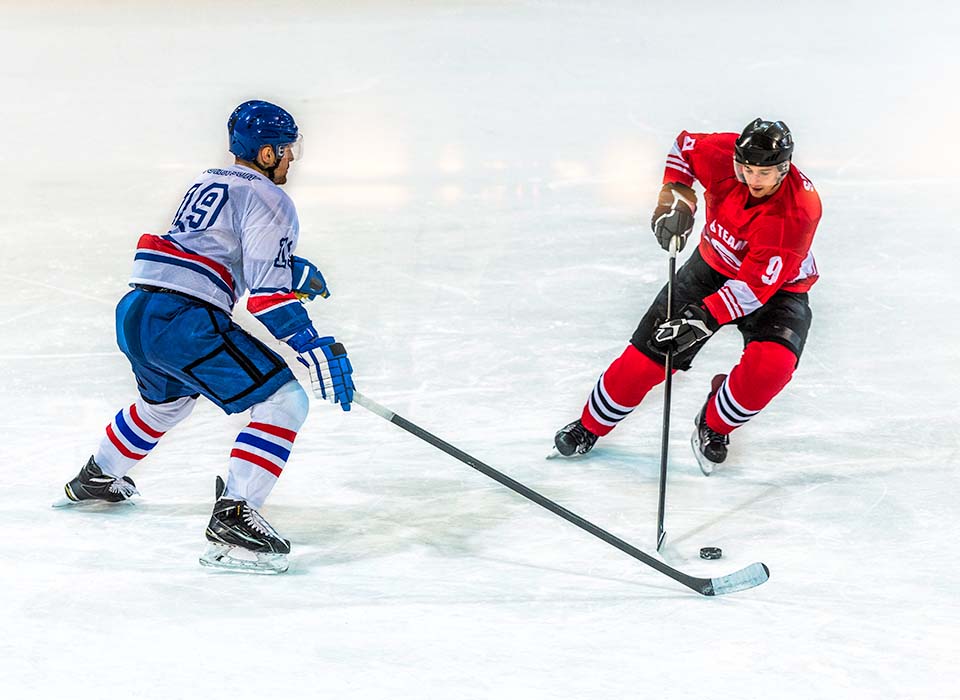Ice hockey has many ways a player may be injured: falling into the ice or into the boards, collision with another player, or running into the puck or a stick. If you’re a hockey player or a parent of a hockey player, here are some common injuries to be aware of.
Concussions
Hockey is the sport with the second-highest rate of concussions, after rugby. Concussions are usually caused by players colliding with each other and stopping quickly. Common concussion symptoms include headaches, nausea/vomiting, balance or vision issues, feeling “foggy”, feeling unusually irritable or sad, and feeling sleepier. A player can have a concussion without passing out. If a player might have a concussion, they should not play until they can be examined with a concussion measurement test. Resting the brain is the main treatment for concussion, but vestibular therapy can also help. A trained team should oversee treatment.
Broken bones
Since hockey is a full-body contact sport, many bones can be broken during play. Broken fingers are common from running into other players, their sticks, or the boards. Players involved in hockey games that include fighting are more likely to have broken fingers. Symptoms of broken fingers include pain, swelling, bruising, difficulty moving the finger, or the finger being positioned in an unusual way. If the bones are still in position, the fingers may be splinted for treatment, while bones that have moved may need to have surgery. Hand therapists can help after any kind of significant finger or hand injury.
Shoulder injuries
Shoulder injuries, including separations and dislocations, are common in hockey players. The collarbone may separate from the shoulder blade or the shoulder may dislocate. Symptoms include the shoulder not looking or feeling normal and pain. Dislocations may also involve swelling, bruising and weakness. The injuries may be seen on x-rays. For a separation, a sling, ice, medicine and rest is usually enough. If the problem persists surgery may be necessary. For dislocations, the provider will put the shoulder back into position. A sling might be needed as the arm rests. Physical therapy will help prevent the dislocation from happening again.
Knee injuries
Medial collateral ligament (MCL) injuries are the most common knee injuries in hockey. They may happen from the outside of your knee receiving a lot of force. Symptoms include pain and swelling on the inside of your knee, stiffness, weakness, and difficulty walking. If the injury is minor, RICE (rest, ice, compression, elevation) and physical therapy is all the treatment that is needed. For a more severe injury, surgery may be required before physical therapy.
Injury prevention
Cross-training (doing workouts other than hockey), wearing the right gear, warming up and obeying the rules can all help prevent injuries in ice hockey. While it may seem obvious that stronger muscles and joints, wearing pads, helmet, face shield and mouthguard, and warming up can help protect your body, obeying the rules may seem surprising. As hockey rules have changed to penalize actions such as checking a player from behind, injuries have gone down. Similarly, players who are in leagues where fighting is common receive more injuries than players in leagues with less fighting.

